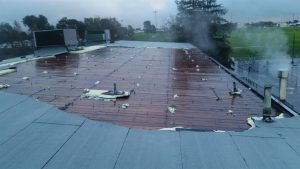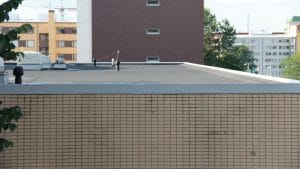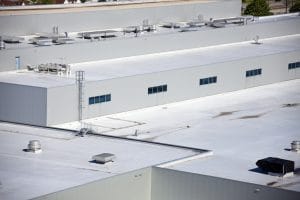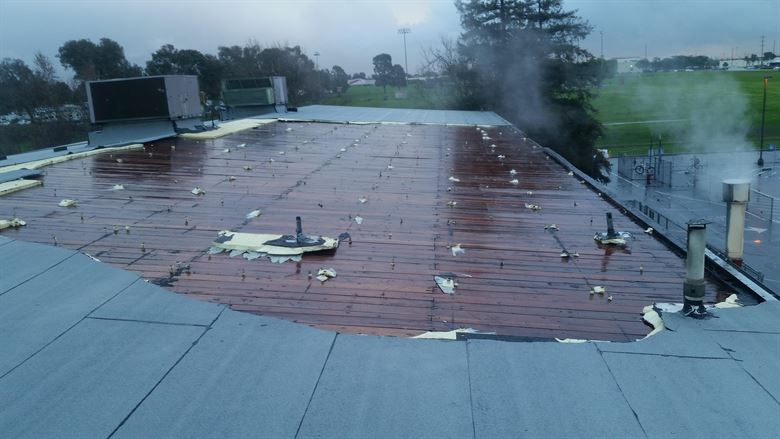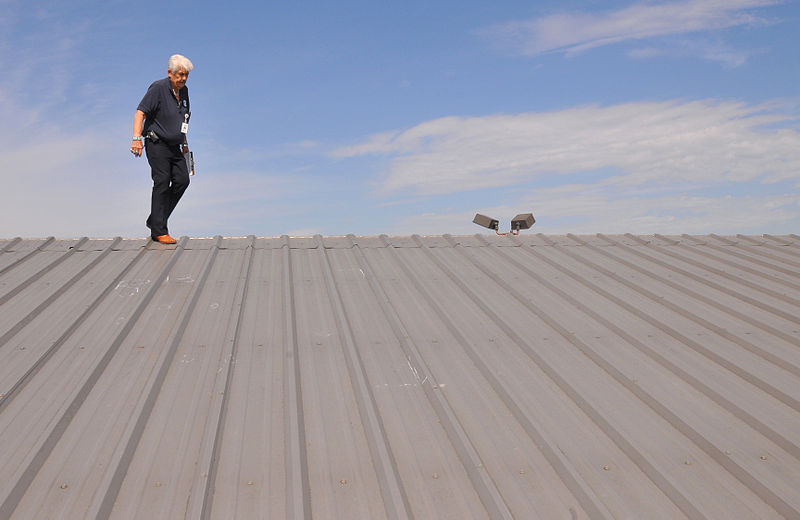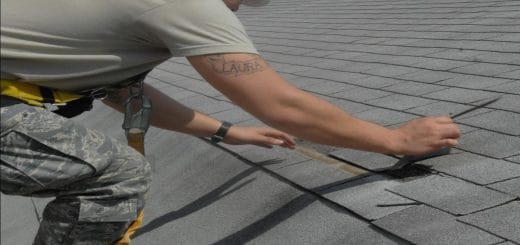Flat Roof Ponding: Harmful Effects
A flat roof is one of the fastest and most economical roofing systems to install. The inexpensive installation is due to the lower risk for roofing contractors. Over the lifespan of the flat roof, repairRepair is the act of fixing or restoring damaged property, m... More costs are also minimal. Preservation of the roof requires repairing issues, like ponding water.
Pros and Cons of Flat Roofs
Installing solar panels is easier to achieve on a flat roof. Placing air conditioning units on the flat roof is another way to take advantage of the conveniences a flat roof provides. But when things like rainwater start to collect on a flat roof, the issue must be promptly addressed.
While a flat roof offers several advantages, this roofing system comes with its own set of disadvantages. The lack of sufficient drainage is by far the biggest drawback of having a flat roof. Due to a lack of pitch, flat roofs fail to drain properly, which allows ponding to occur.
What is Flat Roof Ponding?
Ponding is defined as a pool of water that remains visible on the flat roof 48 hours after a rainfall. Although building owners may just start to notice the dilemma of ponding water, the issue may have started as far back as when the flat roof was first installed.
When water ponds on the flat roof, the stagnant pool of water can seriously compromise the integrity of the roofing structureStructure refers to the framework or components of a buildin... More. Even flat roofs that feature sufficient drainage may undergo ponding in some areas due to damage from weather events, like hail, snow, or windstorms.
Water that sits for lengthy periods on a flat roof causes several harmful effects. In short, the moisture breaks down the coating on the rooftop; the roof’s membrane seams are easily ruined; and unprotected roofing felts undergo severe damage. Here are explanations of five harmful effects of ponding:
1. Damage to the Coating
The ponding of water on a flat roof exposes the roof coatings to prolonged moisture. Standing water affects the stability of the roof’s coating over time. The coating begins to break down under the harmful UV rays of the sun, which heats the ponding water on the rooftop.
2. Destroyed Membrane
Damage occurs as ponding water makes its way through seams in the roofing membrane. As the pooling water heats up by the power of the sun, those areas become susceptible to leaks. The water also acts as a magnifying glass, focusing damaging sunlight to components of the roof.
Any type of roofing membrane will sustain severe damage when submerged under ponding water. Deterioration to the membrane will be highly rapid as a consequence of the pooling water. Photo-oxidation is responsible for the swift damage to the flat roof.
Asphalt and polymeric materials degrade faster when exposed to the continual rounds of ponding and evaporationEvaporation is the process by which a liquid, such as water,... More, which result from the cycles of sunlight and rainfall. Even in the chill of winter, ponding water has disastrous effects on the flat roofing system.
The rooftop’s aggregate surfacing erodes during the freeze and thaw actions of ponding water. When ice forms, it moves constantly with the fluctuations in temperature. The continuous movement of ice in wintry weather literally scrubs the roofing membrane, resulting in major damage to the rooftop.
3. Leaks and Collapse
Moisture gains entry into weak points or imperfections in the roofing system, leading to leaks into the interior parts of the commercial building. Even worse than a leak is the nightmare of a roof collapse. The substantial weight of the ponding water could simply cause the roof structureStructure refers to the framework or components of a buildin... More to fail.
4. Invasive Plant Roots
Ponding water almost always contains dirt and debris. The collection of dirt and water will likely cause vegetation, plants, and fungiFungi are a group of organisms, including mold, mildew, and ... More to grow on the surface of the flat roof. Major structural issues ensue when the root systems of plants and fungiFungi are a group of organisms, including mold, mildew, and ... More penetrate the roof surface.
5. Weakened Features
Deterioration of the substrate occurs as ponding water weakens the roof’s structural integrity at the roof deck. Consistent exposure to water promotes rustRust is a reddish-brown oxide that forms on iron or steel du... More in the roof’s metal parts and damages the roof’s concrete features. Wood and tectum also weaken when in continuous contact with moisture.
Ponding damages the roofing insulationInsulation is a material used in buildings to reduce the tra... More. Wet insulationInsulation is a material used in buildings to reduce the tra... More has no thermal or structural integrity. Its rotting organic fibers and loss of binders cause the insulationInsulation is a material used in buildings to reduce the tra... More to become significantly weaker. Thermal resistance is also greatly reduced. Plus, the insulationInsulation is a material used in buildings to reduce the tra... More undergoes dimensional changes.
Some roofing manufacturers may even nullify the warranty if water remains on the rooftop for 48 to 72 hours after a rainfall. Immediately correcting rooftop ponding and avoiding the many hazardous outcomes of the pooling water are both advisable and feasible.
Clearing the drain lines of litter, dirt and debris should be an initial step. Pooling water may be repaired by installing additional drain lines, which is a practical fix in areas with high precipitation levels. A licensed roofing contractor will either widen existing drain lines or add new ones.
Add roof crickets to avoid trapping rainfall in parts of the rooftop. A cricket helps to divert water from rooftop fixtures. Also, low points can develop on a flat roof after prolonged exposure to the elements. A roofing contractor will locate and raise the low points to promote adequate drainage.
Work with a Commercial Roofer
As soon as you notice ponding on your commercial roof, consult a qualified roofing contractor. Qualified professionals are licensed, bonded, and insured to give our customers maximum peace of mind. We are also proud members of the National Roofing Contractors Association.
Our skilled roofing crews will identify the cause of ponding on your flat roof and offer workable solutions. Professional roofing contractors are prompt, which helps to prevent the spread of further issues to your commercial flat roof. They should also respond to calls within 24 hours.
Roofing contractors are experienced in commercial roof repair, replacement, maintenanceMaintenance is the routine care, inspection, and repair of a... More, installation and construction. We’ve serviced commercial roofs in a variety of industries, from schools to offices to restaurants. Consult your local professionals before ponding has a chance to take its disastrous toll on your roof.











